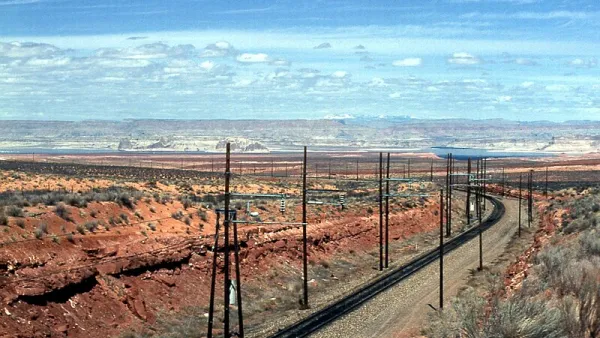The Los Angeles Times uncovers a state with a lot more energy that it needs, which has regulators explaining their decisions residents and businesses opening their wallets.

Ivan Penn and Ryan Menezes report on the state of California's energy infrastructure planning. The premise of the article: The state is using less energy, and even shutting down unnecessary facilities, but it also continues to approve new electricity facilities.
California has a big — and growing — glut of power, an investigation by the Los Angeles Times has found. The state’s power plants are on track to be able to produce at least 21% more electricity than it needs by 2020, based on official estimates. And that doesn’t even count the soaring production of electricity by rooftop solar panels that has added to the surplus.
Those extra facilities and surplus capacity add up to higher bills for Californians: "residential and business customers together pay $6.8 billion more for power than they did [in 2008]," according to Penn and Menezes, despite the fact that they also use 2.6 percent less energy since then.
The article is of feature length, breadth, and depth, with a lot more detail on the politics of energy in California. Also included is an interactive graphic illustrating some of the key points for understanding California's current energy portfolio.
FULL STORY: Californians are paying billions for power they don't need

National Parks Layoffs Will Cause Communities to Lose Billions
Thousands of essential park workers were laid off this week, just before the busy spring break season.

Retro-silient?: America’s First “Eco-burb,” The Woodlands Turns 50
A master-planned community north of Houston offers lessons on green infrastructure and resilient design, but falls short of its founder’s lofty affordability and walkability goals.

Delivering for America Plan Will Downgrade Mail Service in at Least 49.5 Percent of Zip Codes
Republican and Democrat lawmakers criticize the plan for its disproportionate negative impact on rural communities.

Test News Post 1
This is a summary

Test News Headline 46
Test for the image on the front page.

Balancing Bombs and Butterflies: How the National Guard Protects a Rare Species
The National Guard at Fort Indiantown Gap uses GIS technology and land management strategies to balance military training with conservation efforts, ensuring the survival of the rare eastern regal fritillary butterfly.
Urban Design for Planners 1: Software Tools
This six-course series explores essential urban design concepts using open source software and equips planners with the tools they need to participate fully in the urban design process.
Planning for Universal Design
Learn the tools for implementing Universal Design in planning regulations.
EMC Planning Group, Inc.
Planetizen
Planetizen
Mpact (formerly Rail~Volution)
Great Falls Development Authority, Inc.
HUDs Office of Policy Development and Research
NYU Wagner Graduate School of Public Service





























